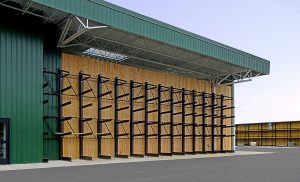Understandably, the COVID-19 pandemic had a disastrous effect on airports and the aviation industry as a whole. This is simply because travelers couldn’t travel, which, in turn, meant significantly reduced income for these facilities.
However, since the industry is experiencing a resurgence and recovery, several aviation construction trends have surfaced that will impact the way airports are constructed, operated, and managed.
In this post, we’ll look at some of these trends in more detail.
Touchless Interactions
Even before the pandemic started, there was a trend towards eliminating unnecessary contact between travelers and airport employees. Unsurprisingly, the pandemic only served to accelerate this trend, which means that touchless interactions will become more commonplace and unnecessary contact between employees and travelers will be eliminated as much as possible.
In practice, this materializes in several ways. For example, some airports have implemented remote check-in options, self-service options for printing tickets and luggage tags, and more. In addition, some airports have implemented self-service options that allow travelers to order food and drinks without standing in queues.
Green Designs
Environmental protection, climate change, and sustainability have been increasingly prevalent talking points in all industries in recent years. And in the aviation industry the situation is no different. As a result, airports have been implementing responsible solutions that rely on strategies to lessen their impact on the environment.
These strategies include aviation construction contractors using everything from wind, geothermal, and solar power solutions to reduce carbon emissions to creating self-sustaining airports that are able to operate entirely off the grid. It’s expected that this trend will continue and that, over time, airports will set industry standards based on carbon-neutral and sustainability goals that need to be complied with.
Diversified Revenue Generation
Due to the lack of travelers during the COVID-19 pandemic, it meant that airports weren’t able to generate any income. As a result, airports are now taking steps and implementing strategies for diversified revenue generation. In other words, they want to implement strategies that will attract even non-travelers and allow them to generate revenue even if there are no flights.
For this reason, the trend of airport construction using both its buildings and adjacent land for non-travel income generation is expected to continue.
Increased Investment in Core Infrastructure
It is expected that airports will invest heavily in their core infrastructure within their terminals to support future growth. This means they’ll focus on upgrading everything from electrical infrastructure to information technology solutions. This is, in part, due to the overall shift towards touchless interactions mentioned above, but also due to laws and regulations that will soon require airports to generate certain amounts of their own electricity.
In addition, it’s expected that airport construction companies will focus on making more efficient use of an airport’s current spaces to increase capacity, rather than expanding its footprint through increased construction. This will be achieved, to a large extent, by using technology to increase the speed at which passengers move through the facility.
Wrapping Up
During and after the COVID-19 pandemic, airports had to adapt in order to survive. This, in turn, led to trends surfacing in the aviation industry, and many of these trends are expected to continue in 2022 and beyond. Hopefully, this post helped illustrate some of these trends in more detail.
If you’re ready to adapt and take advantage of these trends, then Konrad Construction is the perfect fit. With a proactive communication process, we’re the go-to choice for aviation construction, from concept to completion. Our top priority is to completely satisfy our customers’ needs in their construction projects. Contact us today and let us take on your project.




